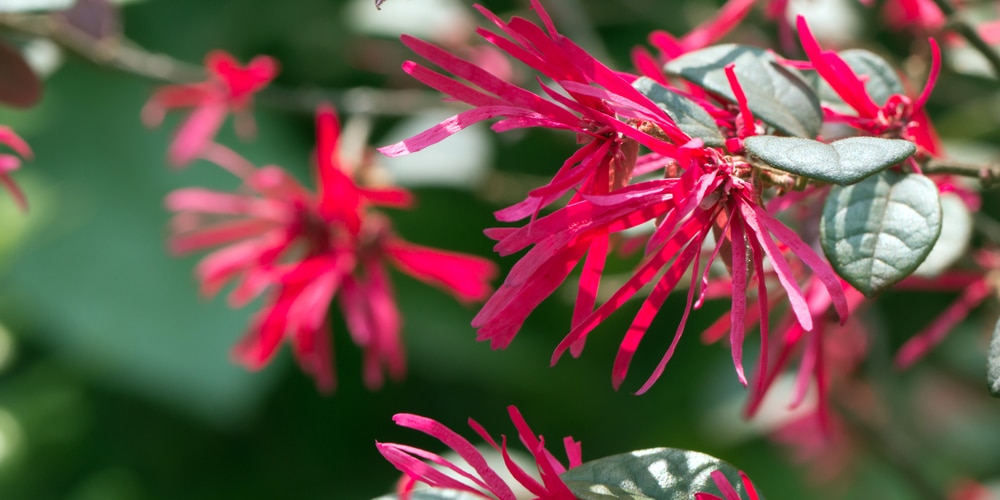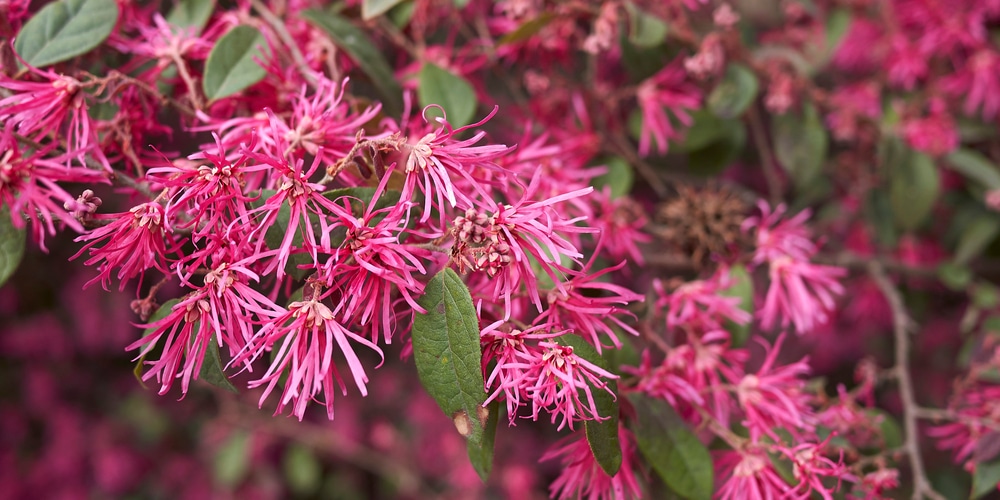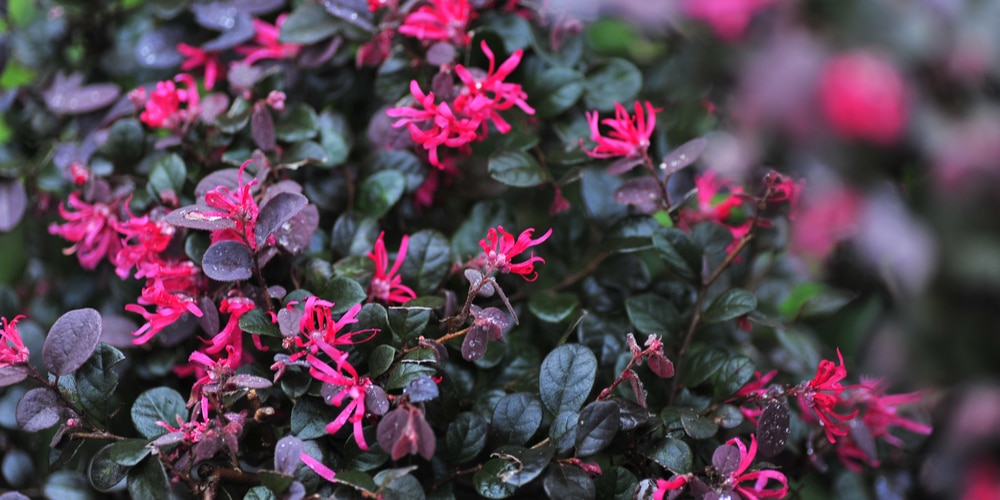Many gardeners appreciate loropetalum for its evergreen and stunning foliage. This ornamental shrub is native to China and works excellently as a low hedge or focal point. Loropetalum can grow up to 8 feet tall and display arching stems and branches. However, this plant also produces gorgeous blooms that add a mild but attractive scent to the surrounding area. But when does loropetalum bloom?
And what else should you know about this plant? You have landed in the right place to get answers to these questions!
When Does Loropetalum Bloom?
Loropetalum displays attractive flowers with a fringe structure. Their four long but thin petals hang down and provide blossoming shrubs with unique looks. You can find loropetalums in several varieties. Commonly, these plants’ blooms are white.
However, some cultivars produce pink, purple, or red flowers. Pick one that suits your needs and preferences (and don’t forget to plant your loropetalum outdoors only if you live in a suitable USDA hardiness zone). Loropetalum blooms look like those of witch hazel.
However, loropetalum is an evergreen plant that produces flowers for a long blooming season. Also, the plant’s leaves are oval and display a rough surface with smooth margins.
Under the ideal growing conditions, loropetalum starts flowering in late winter. If you live in USDA hardiness zones 8 to 11, you can expect your shrub to produce blooms in late February.
Usually, the peak is around March. However, a loropetalum will continue blooming throughout the summer. Flowers develop in clusters: you can expect three to six blossoms at the tips of each branch.
How Can You Boost Your Loropetalum’s Flower Production?
To promote more flowering, consider sticking to a regular pruning schedule. Don’t forget to prune your shrub at the right time of the year (usually before the flowering season) to avoid harming your plant.
Pruning will also help you keep your plant in an attractive shape. But avoid overdoing it! Never cut more than one-third of your shrub. Remember that deadheading isn’t necessary, so don’t lose your time with that.
However, a suitable fertilizer can increase your plant’s flower production. For instance, you can apply a slow-release treatment in the summer until early fall. Remember that loropetalum prefer slightly acidic soils, so pay attention and choose products that will satisfy their growing conditions.
Of course, taking proper care of your plant will make it healthier and result in more flowers. But how do you grow a healthy loropetalum? Jump to the following section to learn our tips!
How to Grow A Thriving Loropetalum
So, you decided to get a loropetalum to add a touch of color to your garden. While this shrub isn’t particularly challenging to grow, recreating the optimal conditions for it to thrive will give you the best results.
To begin with, select a sunny spot to plant your loropetalum. Your shrub should ideally get between four and six hours of direct lighting. If you live in a warm region, consider offering it protection from the scorching rays of the afternoon sun. Also, shelter your plant from the wind, which may damage its foliage, especially when the temperatures are low.
Loropetalum isn’t a heavy feeder. However, it benefits from constant moisture. And because that might easily lead to soggy soil, you must choose an adequate substrate for your plant. Select a well-draining mix that is rich and slightly acidic.
If you need to decrease compaction, consider adding some sand. Overwatering might make your plant susceptible to root rotting, which can cause severe issues to its health. And even if loropetalum is rarely prey to pests, too much moisture might attract them.
To avoid issues, you may want to apply a layer of mulch around your plant’s roots. We recommend you use an organic one. Doing so will increase water retention and improve drainage.
Mulching will also come in handy if you live in a region with cold winters. Indeed, it will act as a thermal insulator and protect your plant from low-temperature shock.
With adequate care, your loropetalum will survive short periods of drought. Plus, they will be less susceptible to diseases and attacks from pests. In turn, this means they will produce abundant blooms during the spring and the summer.
There are also many loropetalum companion plants that will grow well together.


